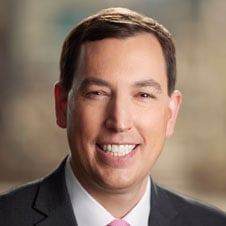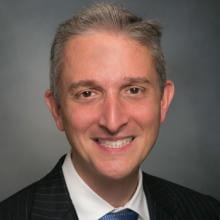Difficult challenges facing the U.S. health care system include battling physician burnout, addressing patient mistrust and the spread of medical misinformation, building workforce diversity, and ensuring workforce safety. The AMA has been a leader in meeting these challenges at a national level, while Kaiser Permanente is doing so at the health system level.
In a wide-ranging conversation covering those issues and more, AMA President Jesse M. Ehrenfeld, MD, MPH, joined Stephen Parodi, MD, associate executive director of The Permanente Medical Group, in a Permanente Medicine webinar discussing the need for physician leadership during this time of massive disruption and transformation in medicine. (Register to view the webinar on demand.)
The Permanente Medical Group is a member of the AMA Health System Program, which provides enterprise solutions to equip leadership, physicians and care teams with resources to help drive the future of medicine.
“It’s so easy to be discouraged, it’s so easy to be turned off by the enormity of what we’re up against,” said Dr. Ehrenfeld, a senior associate dean, tenured professor of anesthesiology and director of the Advancing a Healthier Wisconsin Endowment at the Medical College of Wisconsin.
Dr. Ehrenfeld added, however, that he has been encouraged by his colleagues who show up and step up to fight disinformation and work to eliminate health inequities, and that he’s also encouraged by the young physicians, residents and students he feels privileged to work with.
“For those who are struggling, I hope that they see that we continue to have their backs,” he said. “There is so much joy that still can be had in medicine.”
Reducing physician burnout is a critical component of the AMA Recovery Plan for America’s Physicians.
Far too many American physicians experience burnout. That's why, as part of its Recovery Plan for America’s Physicians, the AMA develops resources that prioritize well-being and highlight workflow changes so physicians can focus on what matters—patient care.
Strategies to cut burnout
Permanente medical groups have been tackling physician burnout as well. The Washington Permanente Medical Group has been using the AMA Organizational Biopsy®, an assessment tool to measure burnout, since 2021.
From 2021 to 2022, the burnout rate fell nearly 6 percentage points at Washington Permanente Medical Group.
Kaiser Permanente also uses digital technology to reduce administrative burdens by helping physicians better manage their email inboxes.
Dr. Ehrenfeld touted how the AMA innovation company Health2047 and the Physician Innovation Network (PIN), an AMA platform built to bring better health care solutions to market, work to ensure that new digital health products are an asset to physician practices and not a burden.
“We continue to see opportunities where, if technology companies worked with a physician who really understood how the workflow goes and how we can integrate these tools, things could be better,” he said.
“A really important point that is sometimes glossed over is that, while burnout manifests in the individual, it originates in the system,” Dr. Ehrenfeld said. “Burnout is not the result of a deficiency of resiliency amongst physicians, it’s due to the systems that we are working in.”
Address physician shortages now
Drs. Ehrenfeld and Parodi discussed how burnout has exacerbated physician and staff shortages and must be addressed immediately.
“This isn’t a theoretical crisis a decade from now,” Dr. Ehrenfeld said. “It’s a serious problem that we have to address today because it takes ten years to train and educate a physician, so the work to ensure patients don’t experience a severe physician shortage in the next decade, has to start today.”
They also noted that strategies to increase diversity must be included in efforts to build a larger physician workforce.
“We know that diversity in the physician workforce leads to better patient outcomes,” Dr. Ehrenfeld said. “There is very clear, very convincing data that, when we have diverse communities served by a diverse physician workforce, patients do better.”
Building a diverse workforce is part of The Permanente Medical Group’s work to address health inequities by providing culturally responsive, equitable care for all its members.
“From my perspective, physicians knowing their communities, being in their communities, representing their communities is critically important,” said Dr. Parodi, who is also vice chair of the AMA Integrated Physician Practice Section's governing council.
Misinformation must be countered
Another driver of burnout has been the deliberate spread of medical misinformation which has caused some patients to question their physicians’ advice on vaccines and other treatments.
“It isn’t just ‘Dr. Google’ that we’re struggling with,” Dr. Parodi said.
Dr. Ehrenfeld agreed, and recalled an incident where a patient told him he didn’t want a blood transfusion during surgery because he didn’t want the blood of someone who had received a COVID-19 vaccination.
“The answer shocked me,” he said. “That is a decision that is informed by misinformation that potentially is putting that patient’s life at risk.”
Physicians have to counter misinformation with credible messages and to increase the volume on those messages.
“Turn it up to 11,” Dr. Ehrenfeld said, referencing the cult-classic movie comedy “This Is Spinal Tap.”





